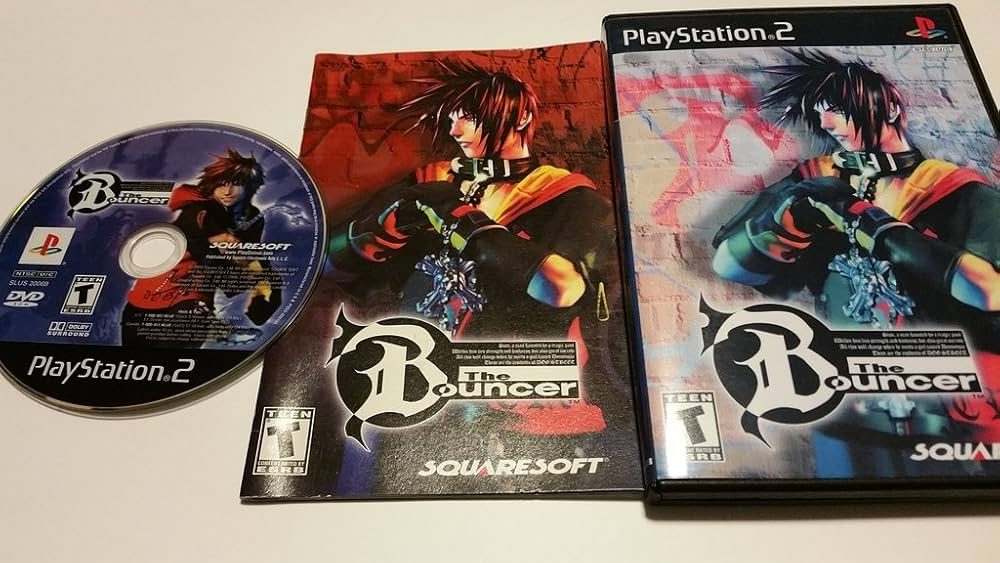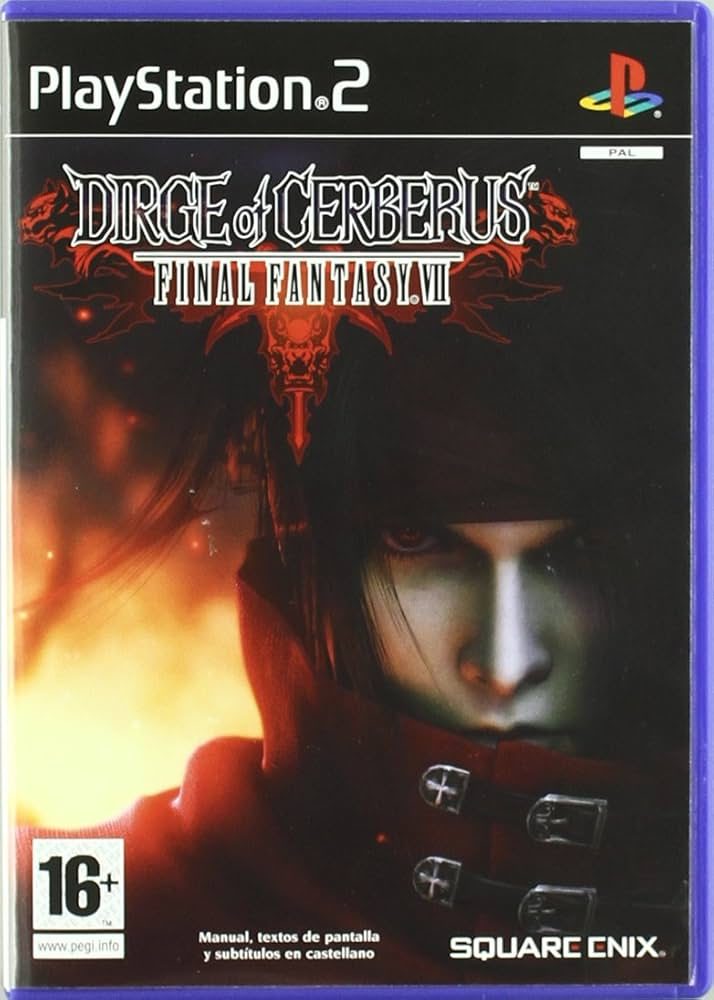The PlayStation 2’s library runs deeper than most gamers realize. Between the blockbusters and certified classics, hundreds of titles got buried under marketing budgets and review scores that missed the point entirely. These games didn’t fail because they sucked—they failed because they dared to be different in a market obsessed with safe bets. You’ll find genuine innovation, weird charm, and lessons that today’s developers still haven’t learned. Some now cost $400 complete. Others sell for pocket change. All of them deserve a second look.
20. Heatseeker

Skip the flight sim manual and strap in for pure aerial chaos. Heatseeker throws realism out the cockpit window, giving you infinite missiles and zero patience for authentic physics. The explosions look dated, the voice acting sounds like a Saturday morning cartoon, but none of that matters when you’re painting the sky with enemy fighters.
This isn’t Top Gun—it’s more like a Michael Bay fever dream with wings. Sometimes mindless fun beats sophisticated simulation. Now available for $15-30 used, which is exactly what brainless action should cost.
19. Ghost Rider

Everyone called this a God of War clone, which completely missed the point. Sure, the chain combat feels familiar, but Ghost Rider nailed the supernatural biker aesthetic better than most movies managed. The motorcycle chase sequences break up button-mashing perfectly, and unlocking Blade transforms the entire combat system with his sword-based moveset.
Being derivative doesn’t automatically make you bad—sometimes it just makes you accessible. Ghost Rider understood its lane and stayed in it, delivering solid thrills for $10-25 on the secondary market.
18. Disaster Report

Natural disasters make terrible party games but incredible interactive experiences. Disaster Report drops you into a crumbling city where every aftershock literally reshapes the level geometry around you. Resource management becomes genuinely tense when the ground won’t stop shaking and your backpack weight affects movement speed through debris.
The multiple endings reflect real consequence-driven storytelling, not arbitrary moral choices. Each decision carries weight because the stakes feel authentic. Rare copies now sell for $40-80, proving its cult status among survival game fans.
17. Judge Dredd: Dredd vs. Death

Comic book games usually suck because developers don’t understand the source material. Dredd vs. Death gets Mega-City One’s dystopian madness perfectly, throwing you into scenarios that feel ripped from the comics themselves. The supernatural vampire and zombie outbreaks keep combat fresh while four-player co-op mode lets friends experience the law enforcement power fantasy together.
The Lawgiver’s six different ammo types—from armor-piercing to incendiary—create tactical depth that generic shooters ignore. When a licensed game respects its source material this much, you notice immediately. Complete copies run $25-50.
16. I-Ninja

Billy West voicing a wise-cracking ninja creates the kind of unexpected charm that makes I-Ninja memorable. The platforming demands frame-perfect timing on moving platforms without feeling punishing, and the combat system rewards creative combo chaining over button-mashing. Technical achievement hides behind cartoon aesthetics that aged better than most realistic graphics from the era.
Kids’ games don’t have to be simple, and I-Ninja proves complex mechanics can coexist with accessible presentation. The challenge curve respects players regardless of age, currently priced at $20-40 used.
15. Predator: Concrete Jungle

Most movie games feel like cash grabs, but Concrete Jungle understands what makes the Predator terrifying. Stalking prey through urban environments using thermal vision and shoulder cannon lock-on feels empowering in ways the recent films never managed. The stealth mechanics work because they’re built around the character’s cloaking device and tree-traversal abilities.
Weapon upgrades unlock new hunting strategies that pure action games lack. When you’re calculating the perfect three-story leap to spear a gang leader, awkward camera angles become minor annoyances. Available for $25-40, which beats movie ticket prices.
14. Family Guy Video Game!

Television humor translates poorly to interactive media, but Family Guy’s game commits fully to the show’s absurd sensibilities. Playing as Peter, Brian, and Stewie feels authentic because the writing maintains the series’ trademark cutaway gags and non-sequitur dialogue. Basic mechanics become strengths when they serve the comedy instead of fighting it.
This exists purely for fans, and that focused approach works better than trying to appeal to everyone. Sometimes knowing your audience matters more than broad market appeal. Budget-friendly at $10-20 used.
13. Urban Reign

Beat ’em ups died out for good reasons, but Urban Reign shows the genre still had untapped potential. The 3D combat system lets you grab enemies and slam them through windows or off rooftops—environmental kills that Streets of Rage couldn’t dream of. Multiple fighting styles create genuine character differences, not just cosmetic palette swaps…. Strategic gameplay emerges when you master the counter-grab system and improvised weapon mechanics. The boring story becomes irrelevant when combat delivers this much satisfaction. Cult following keeps prices at $20-40.
12. GoldenEye: Rogue Agent

The GoldenEye name carried impossible expectations, but Rogue Agent works when you ignore the legacy burden. The titular golden eye grants bullet-time reflexes and magnetic shield powers—abilities that let you deflect rockets back at enemies or slow time during firefights. Multiplayer’s “Magnetic Mayhem” mode turns every metal object into projectile ammunition.
Playing the bad guy feels refreshing in a genre obsessed with heroic narratives. Sometimes subverting expectations works better than meeting them. Available for $10-25, which won’t break your spy gadget budget.
11. Head Hunter

B-movie charm beats AAA polish when the execution shows genuine passion. Headhunter’s gritty sci-fi atmosphere creates immersion through environmental storytelling—corporate logos on abandoned buildings tell the backstory without exposition dumps. The blend of stealth, third-person shooting, and motorcycle chase sequences keeps gameplay varied while the conspiracy plot unfolds with surprising coherence.
Technical limitations become atmospheric strengths when developers work within their constraints creatively. Headhunter proves that vision matters more than budget, currently priced at $20-40 used.
10. Extermination

Resident Evil clones flooded the market, but Extermination’s infection percentage system added genuine innovation to the survival horror formula. Instead of traditional health bars, your infection level rises with each hit—forcing strategic use of medical stations that actually cure the disease progression rather than just healing damage.
Innovation doesn’t require complete genre reinvention—sometimes improving existing mechanics creates better experiences than starting from scratch. Extermination understood this perfectly, now selling for $30-60 among horror collectors.
9. Futurama

Licensed games usually fail because they prioritize fan service over gameplay, but Futurama balances both successfully. The original voice cast and creator-written story feel like experiencing a lost episode rather than a cheap tie-in. Basic platforming mechanics work because they serve Matt Groening’s humor instead of competing with it.
Authentic presentation trumps complex gameplay when the source material provides enough entertainment value. Limited print run means complete copies now sell for $200-400, making this one of the PS2’s most valuable “failures.”
8. Dog’s Life

Playing as a sarcastic dog sounds ridiculous until you experience the unique perspective it provides. Jake’s “smellovision” reveals invisible scent trails that lead to hidden areas and story clues—gameplay mechanics that human protagonists can’t access. The territory-marking system actually affects NPC dog behavior and opens new dialogue trees.
Experimental game design takes risks that established formulas avoid. Dog’s Life dared to be different when most developers played it safe, currently available for $40-80.
7. Herdy Gerdy

Farming simulations usually prioritize relaxation over challenge, but Herdy Gerdy demands strategic thinking from players who want to keep their livestock alive through day-night cycles. The AI animals have individual personalities and fear responses—sheep panic differently than pigs, requiring different herding techniques for each species.
Peaceful gameplay doesn’t mean simple gameplay—Herdy Gerdy proves that non-violent games can offer genuine complexity and satisfaction. The concept still feels fresh decades later, priced at $30-60 for patient collectors.
6. Jet Li: Rise to Honor

Movie tie-ins rarely capture their source material’s essence, but Rise to Honor translates Jet Li’s martial arts prowess through motion-captured animations into satisfying interactive combat. The right analog stick becomes your attack direction—point at an enemy to instantly target them with authentic kung fu combinations. Environmental attacks let you grab pool cues or throw opponents through windows.
When celebrity games work, they create power fantasies that generic characters can’t deliver. Rise to Honor makes you feel like starring in your own Hong Kong action film for $25-60.
5. The Matrix: Path of Neo

Movie games typically disappoint, but Path of Neo benefits from direct Wachowski involvement that ensures narrative authenticity. The directors wrote new scenes specifically for the game, including an alternate final battle against hundreds of Agent Smiths that plays like a greatest hits of Matrix combat. Bullet-time mechanics feel responsive rather than gimmicky.
When filmmakers participate actively in game development, the results transcend typical licensed cash grabs. Path of Neo proves that creative control matters more than development budget, available for $20-50.
4. Eve of Extinction

Technical mediocrity can’t kill genuine charm when the core concept resonates with players. Eve of Extinction’s Legacy Weapon morphs between sword, axe, and spear forms mid-combo—letting you chain heavy axe strikes into quick spear thrusts seamlessly. The bizarre cast includes a villain who fights with weaponized playing cards and a boss battle against a sentient military helicopter.
Sometimes flawed games teach more about design than perfect ones. Eve of Extinction shows how strong ideas overcome weak execution when players connect with the vision, priced at $10-30 for the curious.
3. The Bouncer

Early PlayStation 2 showcases prioritized visual spectacle over gameplay depth, but The Bouncer’s real-time facial animation and dynamic lighting still impress today. Multiple character perspectives create three completely different playthroughs—Sion focuses on martial arts, Volt uses wrestling moves, and Kou specializes in acrobatic kicks. Each route reveals different story details and unlocks unique abilities.
When hardware capabilities limit ambition, focused execution becomes crucial. The Bouncer maximized its strengths instead of overreaching, currently selling for $20-40.
2. Resident Evil: Dead Aim

The Resident Evil Survivor series earned terrible reputations, but Dead Aim improved the formula significantly through dual perspective gameplay. Third-person exploration maintains traditional RE atmosphere, while seamless transitions to first-person aiming deliver precise headshots against approaching zombies. Light gun compatibility transforms it into an arcade experience at home.
Hybrid genres work when developers understand both component styles completely. Dead Aim proves that evolution beats revolution when improving flawed concepts, available for $40-80 among RE completionists.
1. Dirge of Cerberus: Final Fantasy VII

Final Fantasy spin-offs usually disappoint series fans, but Dirge of Cerberus succeeds through Vincent Valentine’s character development and world-building that meaningfully expands the FFVII universe. The third-person shooting mechanics feel responsive once you customize the control scheme, and the materia upgrade system adds RPG depth to firefights against Deepground soldiers.
When established franchises experiment with genre changes, the results reveal untapped potential that traditional entries can’t explore. Dirge of Cerberus proves that risk-taking pays off when execution matches ambition, reasonably priced at $20-40.




























